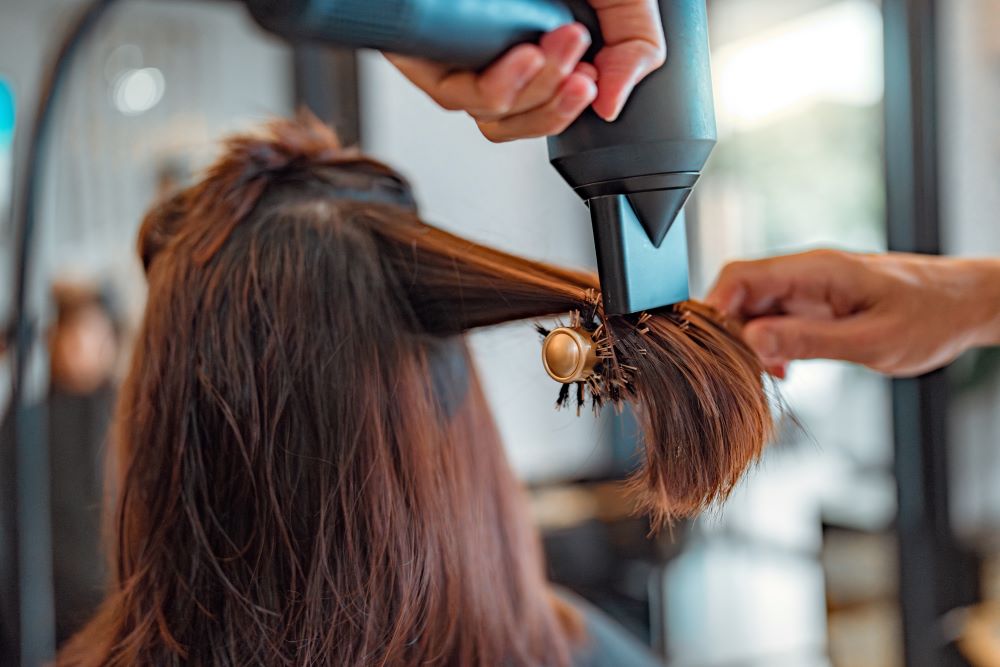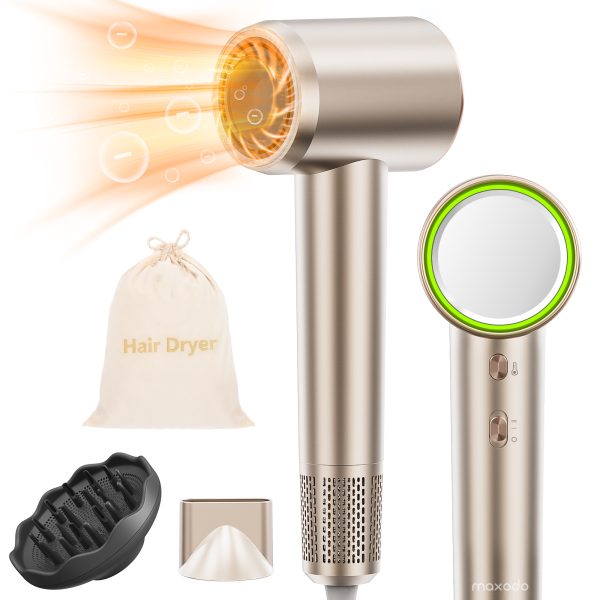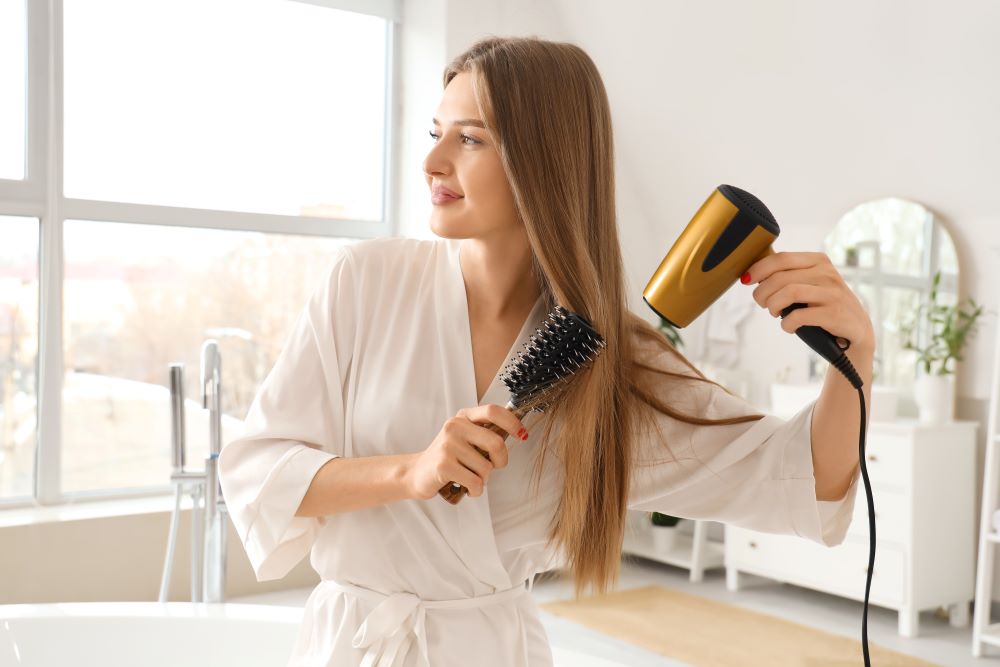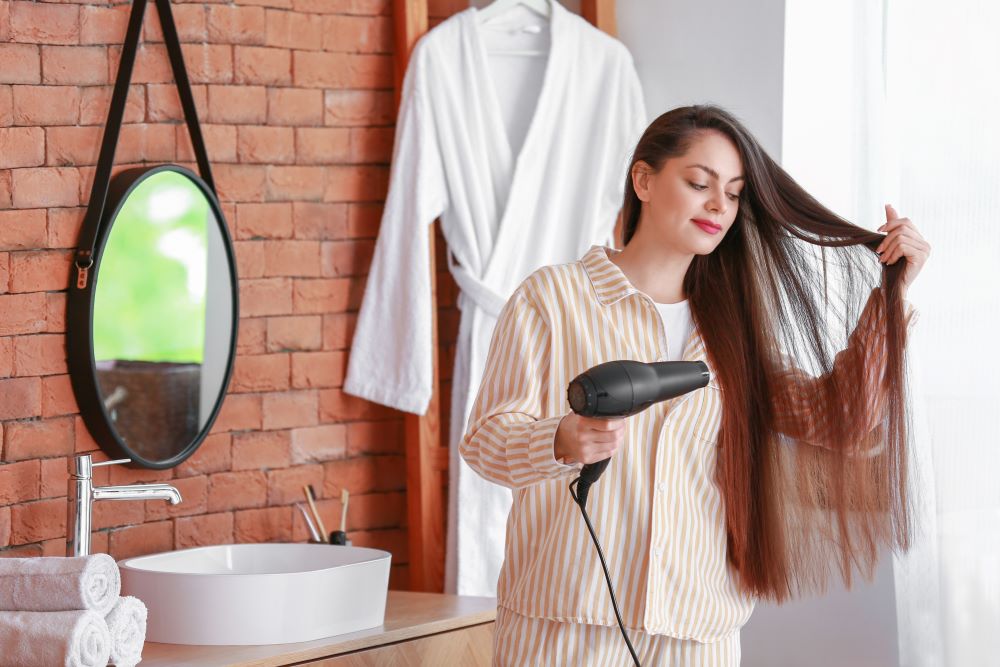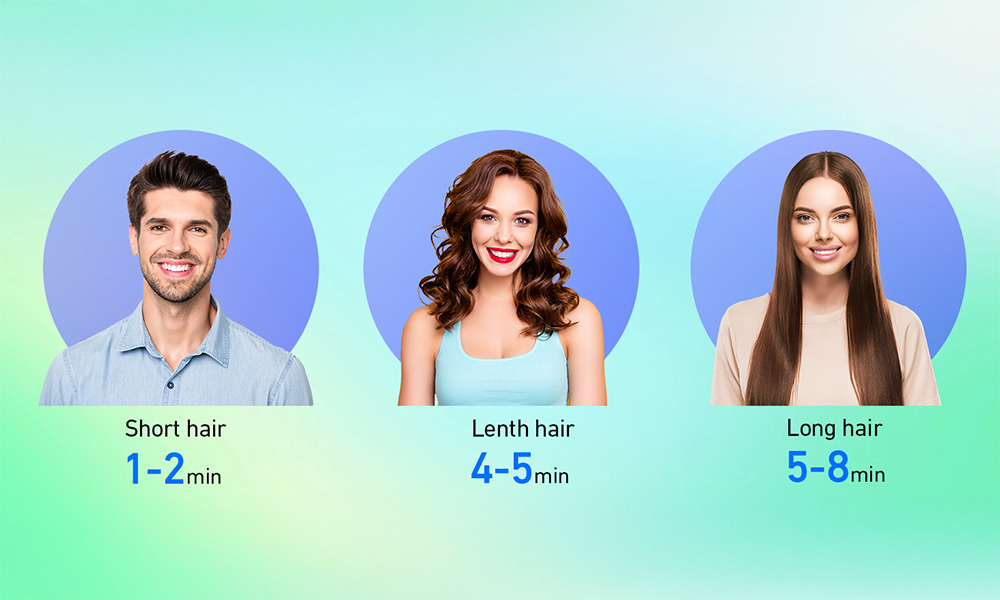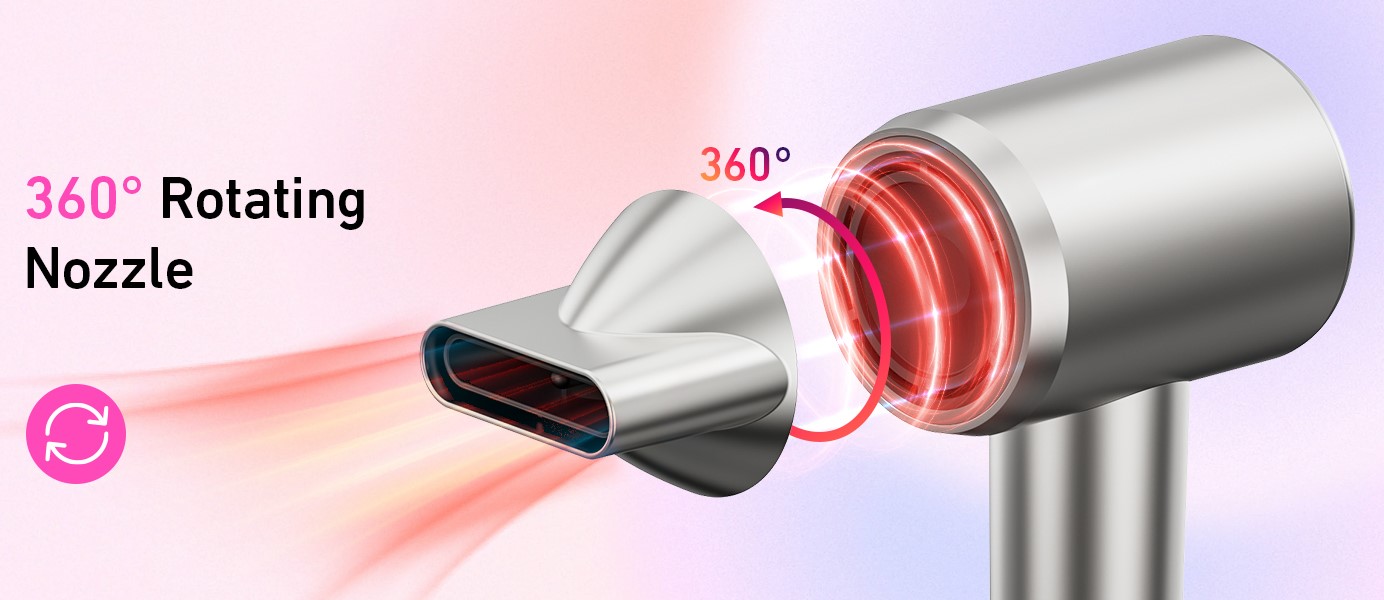
- Home
- Hair Dryer
- Blow-Drying Tips for Color-Treated Hair: Protecting Your Dye Job
Blow-Drying Tips for Color-Treated Hair: Protecting Your Dye Job
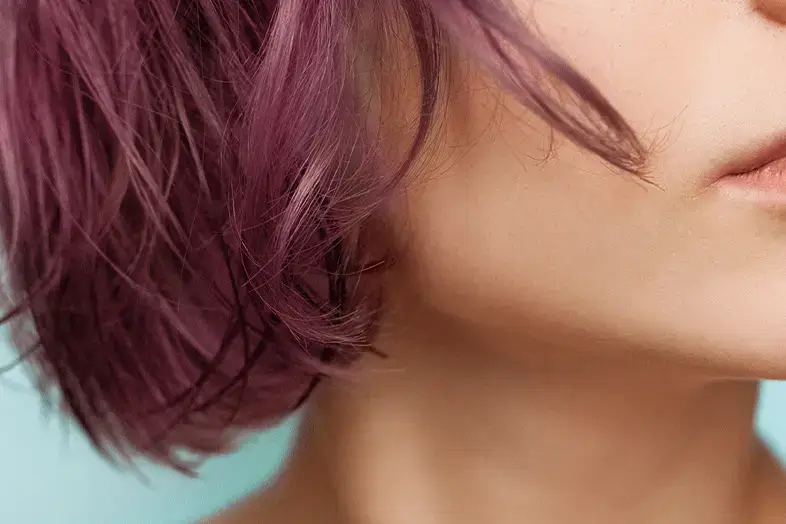
Color-treated hair requires special attention and care to maintain its vibrant color and health. The process of coloring can leave hair more vulnerable to damage, especially when exposed to heat styling tools like blow dryers. Understanding how to properly protect and care for dyed hair can make a significant difference in how long your color lasts and the overall health of your hair.
When hair is dyed, the outer layer of the hair, known as the cuticle, is opened to allow color to penetrate the hair shaft. This process can leave the hair more porous and susceptible to moisture loss, leading to dryness, brittleness, and fading of the color over time. The integrity of the hair is compromised, making it imperative to adopt a gentler hair care routine that minimizes further damage.
Heat styling is a common cause of color fading and hair damage. High temperatures can cause the hair cuticle to open further, accelerating color loss and leading to increased dryness and breakage. Understanding how to use heat safely and effectively is crucial for anyone with color-treated hair looking to preserve their dye job while maintaining healthy hair.
Pre-Blow-Drying: Preparing Your Hair for Heat
Before reaching for the blow dryer, there are several steps you can take to prepare your color-treated hair for heat exposure. This preparation can significantly reduce the risk of damage and help maintain your hair’s color and moisture.
The Best Wash Routine for Color-Treated Hair
Choosing the right shampoo and conditioner is the first step in preparing your hair for blow-drying. Look for products specifically designed for color-treated hair, as these are typically gentler and contain ingredients that help preserve color and moisturize the hair. Avoid washing your hair too frequently, as this can strip away natural oils and color. Using lukewarm water instead of hot can also help protect your hair’s color and health.

Towel-Drying Techniques to Reduce Damage
Gently towel-drying your hair before blow-drying can significantly reduce heat exposure and damage. Instead of rubbing your hair vigorously, which can cause tangles and breakage, pat it gently with a soft, absorbent towel. Consider using a microfiber towel or an old t-shirt, as these are gentler on the hair cuticle and help reduce frizz and damage.

Heat Protectant Sprays: Your First Line of Defense
Applying a heat protectant spray is a critical step in protecting color-treated hair from heat damage. These products form a protective barrier over the hair shaft, helping to lock in moisture and shield the hair from high temperatures. Look for a product that is specifically formulated for color-treated hair to provide maximum protection and benefits.
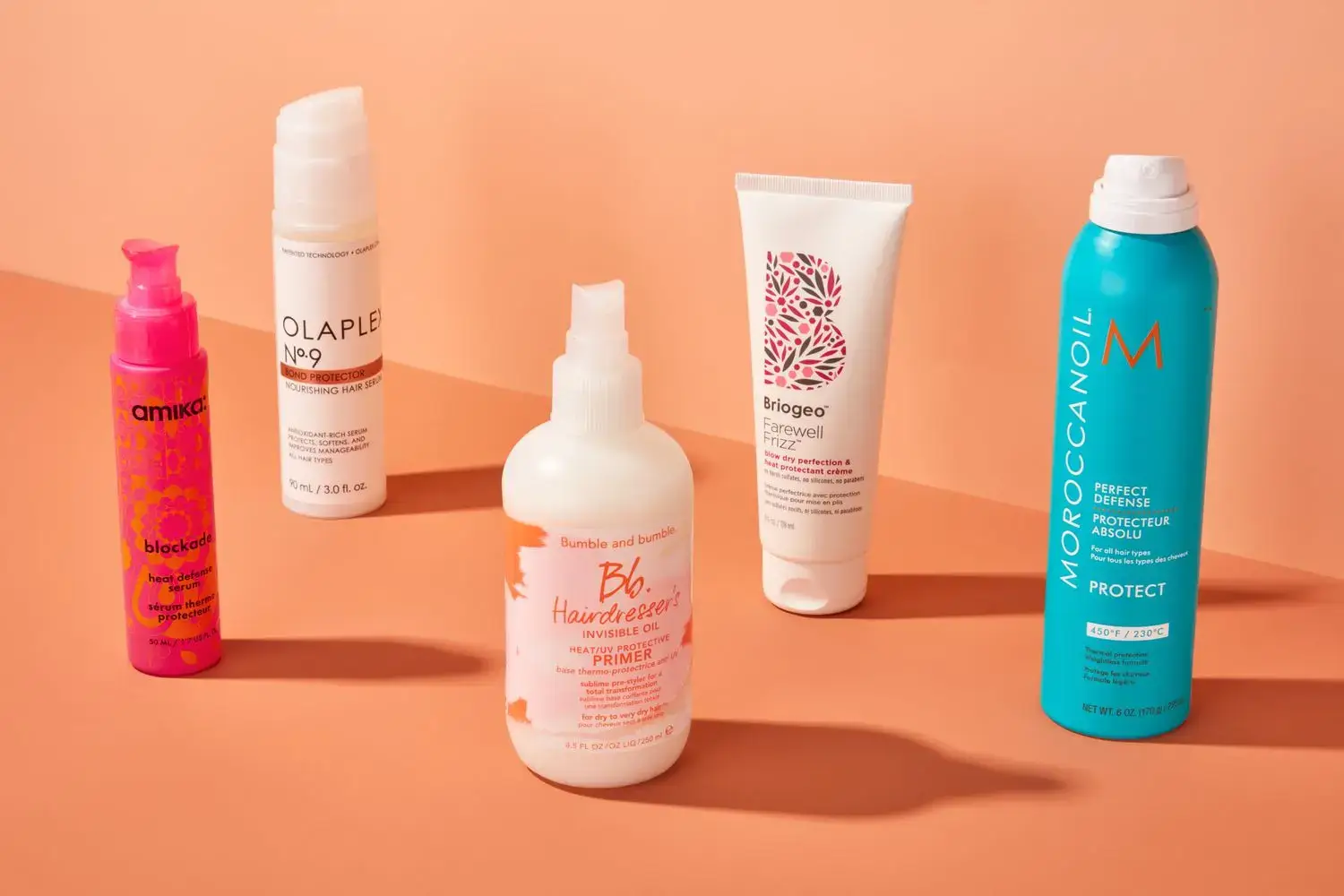
Choosing the Right Tools for Blow-Drying
The tools you use to blow-dry your hair can have a significant impact on the health of your color-treated hair. Choosing the right tools and techniques can help minimize damage and preserve your hair’s color and shine.
Selecting the Best Blow Dryer for Dyed Hair
Invest in a high-quality blow dryer that allows for temperature and speed adjustments. Look for models with ionic and ceramic technology, as these help to distribute heat more evenly, reducing the chance of overheating and damage. A blow dryer with a cool shot button can also be beneficial for setting your style and adding shine without additional heat.
The Significance of Ionic and Ceramic Technologies
Ionic technology works by emitting negative ions that break down water molecules, allowing the hair to dry faster and reducing heat exposure. This technology also helps to seal the hair cuticle, reducing frizz and enhancing shine. Ceramic technology provides even heat distribution, helping to prevent hot spots that can burn the hair. Both technologies are essential for minimizing damage to color-treated hair during blow-drying.
Diffusers and Concentrators: Tailoring Your Blow-Drying Technique
Using attachments like diffusers and concentrators can further customize your blow-drying experience to suit your hair type and styling needs. A diffuser is ideal for those with curly or wavy hair, as it disperses the air flow to dry hair gently and enhance natural curls without disrupting the hair pattern. A concentrator nozzle focuses the airflow for more precise styling, allowing for straighter styles and more control when drying. Using these attachments correctly can help achieve the desired style while minimizing heat damage to color-treated hair.
Blow-Drying Techniques for Color-Treated Hair
The Optimal Blow-Drying Temperature for Dyed Hair
When it comes to blow-drying color-treated hair, the key is to use the lowest temperature setting that is still effective in drying your hair. High temperatures can cause the hair cuticle to open, leading to color fading and moisture loss. Ideally, you should use a blow dryer with adjustable heat settings, opting for a cool or low heat setting. If your dryer has a “cool shot” button, use it to finish off your drying process, as this can help seal the cuticle, adding shine and locking in color.
Sectioning Your Hair for Even Heat Distribution
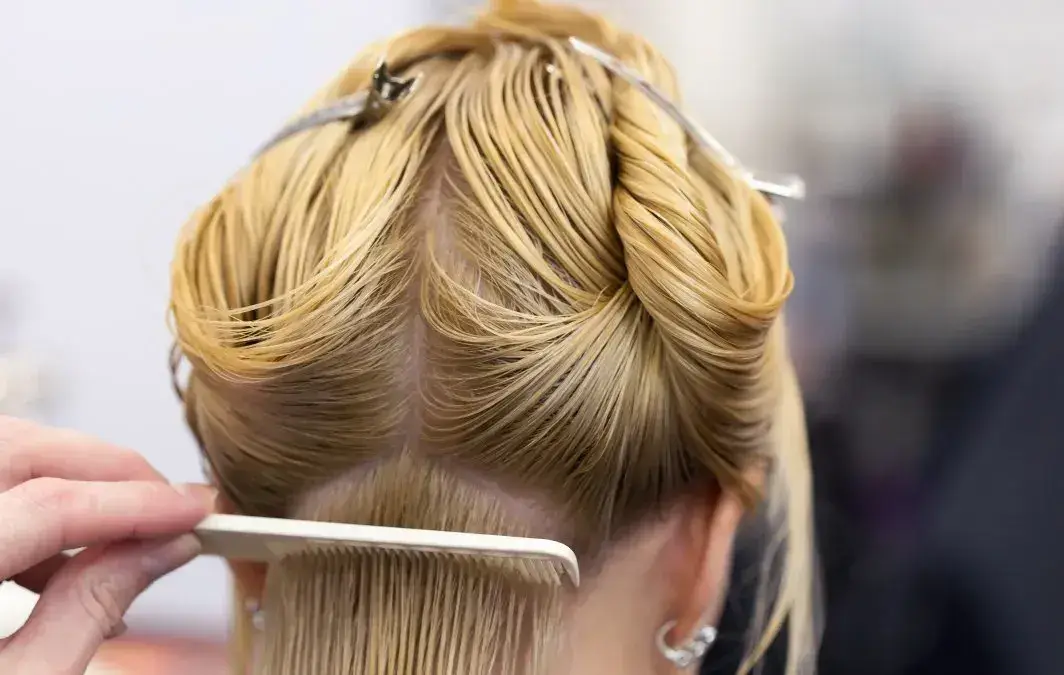
To ensure even heat distribution while minimizing damage, start by sectioning your hair into manageable parts. Use clips to separate your hair into sections—typically, four to six sections work well, depending on the thickness of your hair. Dry one section at a time, starting from the bottom layers and moving upwards. This method not only ensures that heat is evenly distributed but also reduces the time your hair is exposed to heat, minimizing potential damage.
Tips for Minimizing Heat Exposure and Preventing Over-Drying
Minimizing heat exposure is crucial for maintaining the integrity and color of treated hair. Always start by drying your hair with a towel to remove as much moisture as possible. Apply a heat protectant evenly throughout your hair to create a protective barrier against heat damage. When blow-drying, keep the dryer moving constantly and hold it at least six inches away from your hair to avoid concentrated heat exposure. Opt for a dryer with ionic technology, as it helps dry hair faster and reduces the need for prolonged heat exposure.
Aftercare: Extending the Life of Your Dye Job
Post-Blow-Drying Treatments for Color-Treated Hair
After blow-drying, it’s important to apply a leave-in conditioner or hair serum designed for color-treated hair. These products can help seal moisture, add shine, and protect your hair from environmental damage. Look for products with antioxidants and UV filters to protect the color from fading and keep your hair healthy and vibrant.
Overnight Hair Care Tips to Lock in Color
Protecting your color-treated hair overnight is essential for maintaining its health and vibrancy. Use a silk or satin pillowcase to reduce friction and prevent breakage. Consider applying a lightweight, leave-in conditioner or overnight hair mask once or twice a week to nourish and hydrate your hair while you sleep, which can help lock in color and reduce the risk of dryness and damage.
The Role of UV Protection in Preserving Hair Color

Exposure to UV rays can significantly fade hair color and weaken hair strands. Incorporate hair care products that contain UV protectants into your routine. When spending extended periods outdoors, consider wearing a hat or using a hair product with SPF protection to shield your hair from the sun’s damaging effects.
Frequently Asked Questions (FAQs) About Blow-Drying Color-Treated Hair
Can I blow-dry my hair every day if it’s color-treated?
It’s best to avoid daily blow-drying, as the frequent heat can lead to color fade and damage over time. If you must dry your hair daily, use the lowest heat setting, always apply a heat protectant, and try to air-dry your hair partially before blow-drying.
How often should I use heat protectant products?
You should use a heat protectant every time you plan to use heat on your hair, including blow-drying, straightening, or curling. These products form a protective barrier that minimizes heat damage and helps preserve color.
Are there any natural alternatives to commercial heat protectants?
While commercial heat protectants are specifically formulated to protect hair from heat, some natural oils like argan, coconut, and almond oil can provide a moderate protective barrier due to their thermal properties. However, they may not be as effective as commercial products designed for heat protection, and using too much can make your hair greasy. Always apply sparingly and evenly distribute through your hair.
Top Mistakes to Avoid with Color-Treated Hair
Common Blow-Drying Errors That Can Fade Your Color
Blow-drying color-treated hair requires a gentle touch and understanding. A major mistake many make is using the highest heat setting to speed up the drying process. High temperatures not only strip the hair of moisture but also cause the hair color to fade prematurely. Another error is blow-drying the hair when it’s soaking wet. It’s less damaging to let your hair air-dry partially before blow-drying it, as excessive exposure to heat on dripping wet hair increases the risk of heat damage and color fading.
Why Skipping Heat Protectant is a Major No-No
Skipping heat protectant is like sunbathing without sunscreen. Heat protectants form a barrier on the hair shaft, minimizing moisture loss and protecting the hair cuticle from the high temperatures of blow dryers. These products often contain ingredients that help maintain hair color vibrancy. Using a heat protectant can significantly reduce color fading and maintain the health of your hair.
The Impact of High Heat Settings on Hair Health
High heat settings on blow dryers can cause irreparable damage to color-treated hair. The intense heat can lead to brittle strands, split ends, and a dull appearance. Additionally, it can open the hair cuticle too much, leading to rapid color fading. Using a cooler setting preserves the integrity of the hair cuticle and helps retain the moisture essential for keeping color-treated hair looking vibrant.
Expert Tips and Tricks for Healthy, Vibrant Color-Treated Hair
Salon Secrets for Maintaining Glossy, Dyed Hair
Salon professionals often emphasize the importance of using sulfate-free shampoos, which are gentler on dyed hair and help retain color for longer. They also recommend regular deep conditioning treatments to replenish moisture and enhance hair shine. Another salon tip is to rinse your hair with cool water after conditioning to seal the hair cuticle and boost shine.
How to Choose Color-Safe Hair Products
When selecting hair products for color-treated hair, look for labels that specify “color-safe” or “for color-treated hair.” These products are formulated to be gentle on dyed hair and often contain ingredients that help preserve color and improve hair health. Avoid products with harsh detergents like sulfates and opt for those enriched with antioxidants and UV filters to protect against environmental factors that can fade hair color.
Innovative Tools and Accessories for Safe Styling
The market is full of innovative styling tools designed to minimize damage to color-treated hair. Ionic hair dryers, for example, emit negative ions that reduce drying time and help close the hair cuticle, locking in moisture and color. Hair protectant sprays that double as styling agents can provide hold and shine while protecting the hair from heat. Additionally, using silk or satin pillowcases can reduce friction and help maintain hair health and color vibrancy.
Conclusion: Embracing Best Practices for Color-Treated Hair Care
Protecting color-treated hair involves choosing the right products, avoiding high heat settings, and applying a heat protectant before styling. Regular maintenance through deep conditioning and using color-safe products will extend the life of your dye job.
Regular trims, deep conditioning treatments, and using the right products are essential for maintaining the health and vibrancy of color-treated hair. Regular maintenance helps prevent split ends, breakage, and dullness, ensuring your hair color looks fresh and vibrant for as long as possible.
Color-treated hair doesn’t have to limit your creativity or style. With the right care and precautions, you can experiment with different looks and styles confidently. Embrace the journey of finding what works best for your hair, knowing that maintaining its health is the key to showcasing beautiful, vibrant color.
Popular Post

Ultimate Guide to Using a Hair Dryer with Nozzle for Styling
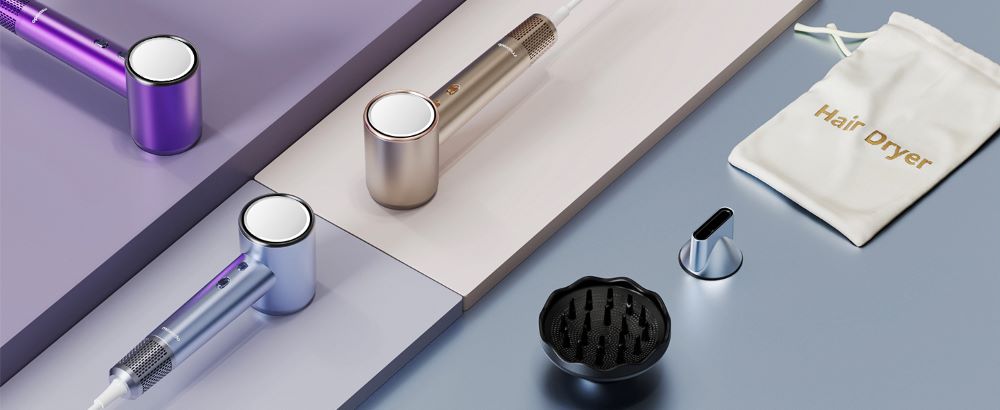
The Benefits of Using a Hair Dryer with a Diffuser
